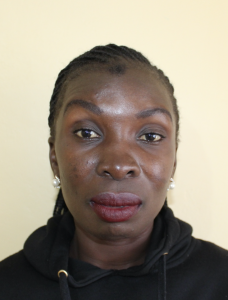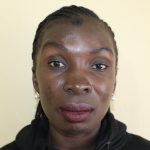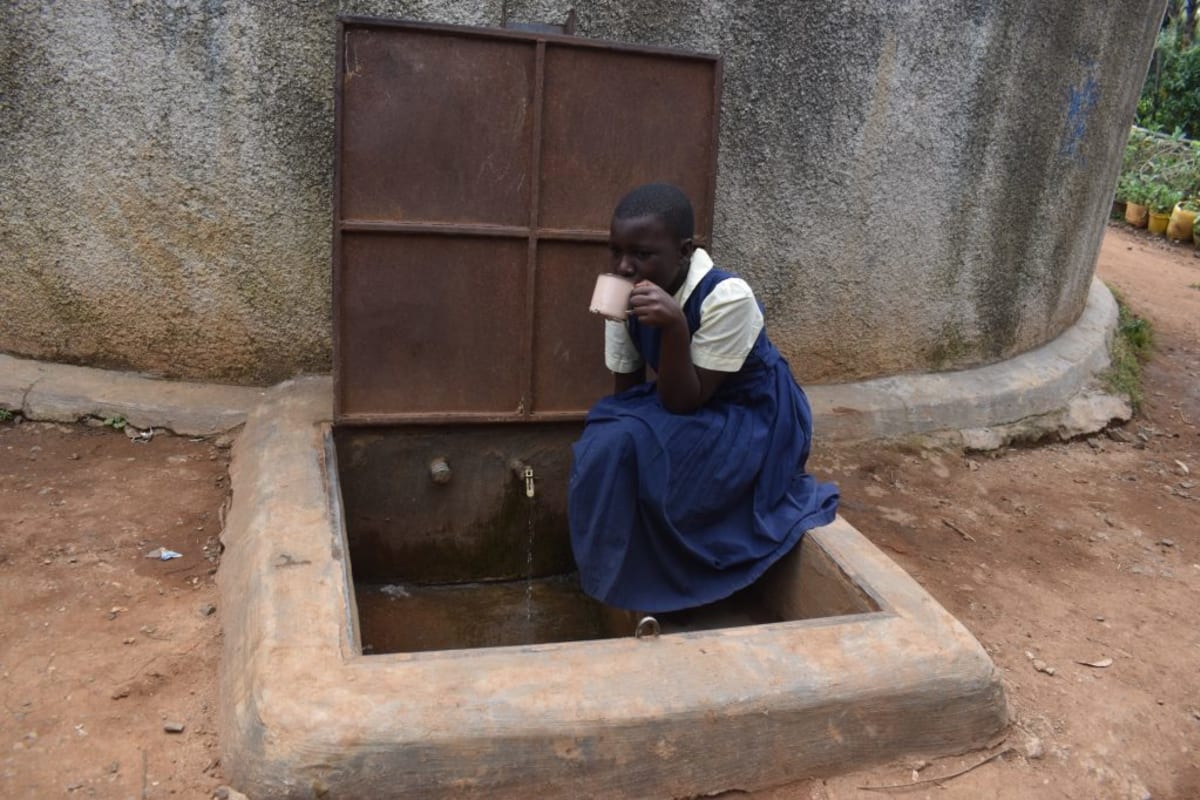"As the Head Teacher, I have always wished to head a school that is able to satisfy the needs of every child in every way, but ever since the school was started it has never had water," reflected Mrs. Monica Wamboi of Kapsegeli KAG Primary School.
"When we meet as school heads, it challenges me how my colleagues have made big steps in their schools. Although I always looked forward to better things ahead, lack of water is a very big problem. When I see the children go for water outside the school I get worried because of their safety. They waste a lot of time and energy, and this affects their performance. Being the headteacher, I really lack peace."
There is no source of water on campus for Kapsegeli KAG Primary's 297 students and 12 teachers and staff. Founded in 1999 by the Kenya Assemblies of God Church and the local community members, it has always been this way.
In an attempt to meet all of the school's daily drinking, cooking, and cleaning needs, pupils are sent to a spring in the community where they wait in long lines - either of their own making due to their high population, or combined with the line of community members fetching water.
The spring is located down a very steep and hilly section of land surrounded by trees, which becomes slick with mud when it rains. Students report tiring out from the trip to get water and carrying it back to school, which they are sometimes required to do multiple times a day. This wastes a lot of precious learning time and zaps pupils' energy and attention once they are back in class.
The spring area is not well maintained, bringing the quality of water into question. Most importantly, however, are the dirty containers students use to collect the water, which contaminate anything that enters them. Typhoid, cholera, and dysentery are among the most commonly contracted illnesses for students here.
Other consequences of relying on the spring water are putting the children at risk of getting physically hurt while slipping in the mud or getting tired, and students and staff feeling emotionally drained. When students scramble on the walk there and back, pushing and pulling each other down the path, they inevitably slide and fall. This adds to their list of physical injuries and brings morale down for everyone.
"The water situation in this school is not good," said School Board Chair Ann Asega plainly.
"The distance from which the children go in search of water is far, and we end up losing students every term to other neighboring schools [with better situations]. As the Board Chair, I always look forward to the school population increasing, but the water issues are now making me worried."
What We Can Do:
Rain Tank
A 75,000-liter rainwater catchment tank will help alleviate the water crisis at this school. The school will help collect the needed construction materials such as sand, bricks, rocks, and water for mixing cement. We will complement their materials by providing an expert team of artisans, tools, hardware, and the guttering system. Once finished, this tank will begin catching rainfall that will be used by the school’s students and staff for drinking, handwashing, cooking, cleaning, and much more.
We and the school strongly believe that all of these components will work together to improve standards at this school, which will help lead to better student academic performance and will help to unlock the potential for these students to live better, healthier lives.
Handwashing Stations
There is currently nowhere for students to wash their hands after using the latrines or before eating lunch, let alone the water to do so.
The student health club will oversee the 2 new handwashing stations we will provide, and make sure they are kept clean and in working condition. The club leaders will fill the handwashing stations with water daily and make sure they are always supplied with a cleaning agent such as soap or ash.
VIP Latrines
2 triple-door latrine blocks will be constructed with local materials that the school will help gather. 3 doors will serve the girls while the other 3 will serve the boys. All of these new latrines will have cement floors that are designed to be easy to use and to clean. And with a rain tank right on school property, there should be enough water to keep them clean.
Training on Health, Hygiene, COVID-19, and More
We will hold a 1-day intensive training session with students, teachers, and parents. This training will cover a wide range of topics including COVID-19 symptoms, transmission routes, and prevention; personal and environmental hygiene; and the operation and maintenance of the rain tank, latrines, and handwashing stations. There will be a special emphasis on handwashing.
Our team of facilitators will use a variety of methods to train, including participatory hygiene and sanitation transformation, and asset-based community development. We will initiate a student health club, which will prepare students to lead other pupils into healthy habits at school and at home. We will also lead lectures, group discussions, and provide illustrative handouts to teach health topics and ways to promote good hygiene practices within the school including handwashing and water treatment. We will then conduct a series of follow-up trainings before transitioning to our regularly scheduled support visits throughout the year.

 Rainwater Catchment
Rainwater Catchment
 Rehabilitation Project
Rehabilitation Project














































